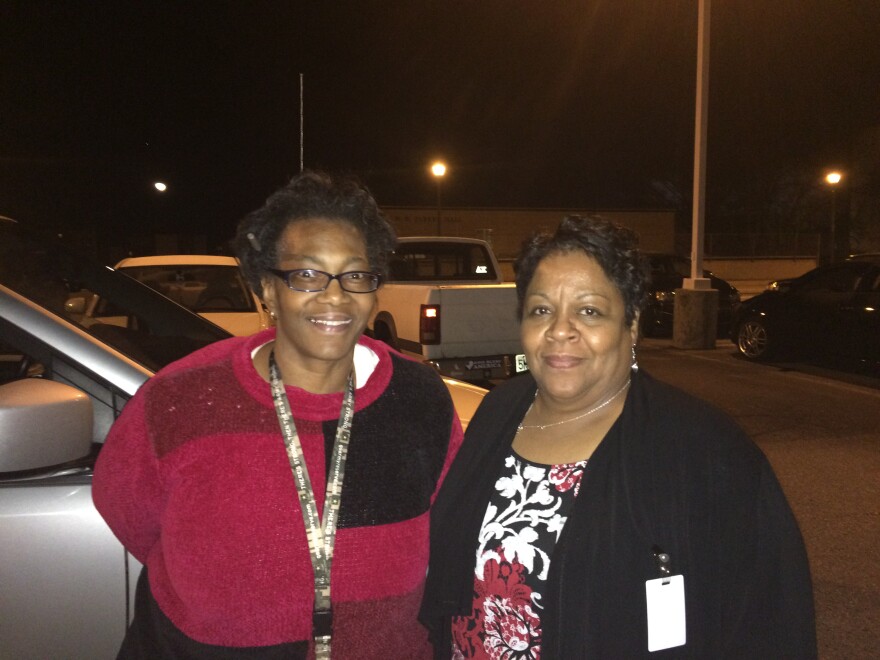Southeast Missouri school districts like Cape Girardeau and Jackson are seeing a growing number of homeless youth. These teens are looking for a place to go, but shelters in the area are geared for adults--leaving many kids on their own. In the second story of a series, we focus on what social workers and volunteers are doing to help.
Social workers Zoia Martin and Regina Moore are checking every nook and cranny of local restaurants, grocery stores and a bunch of filling stations in Cape Girardeau on a cold, winter night. They’re looking for homeless adults and youth for the annual point-in-time count. Our first stop was a gas station.
By the end of the night, they didn’t come across any homeless teens, which isn’t all that uncommon. Martin said in the past anytime she’s found a youth during this count they were usually small children that were with their parents.
Homeless teens secretly couchsurf, drifting between a friend or a family member’s house, trying to survive without adults finding out. But every now and then when she does meet one she hits them with a swift once-over and a side of compassion.
"I can see they need shoes,” Martin said. “I don't ask. I look for resources for them, and I always allow them to dictate what their needs are. In other words, how can I help you at this time? Can you tell me what I could do to help you?”
However, Martin said the biggest problem is securing basic needs like housing. Most of the available resources are targeted towards adults or adults with children, but unaccompanied minors are often pushed to the side.
“There's been several teenage boys that have went outside of the county of Cape Girardeau, and went to some of the smaller areas and they've lived on farms and did farm work,” Martin said. “And that's been it."
Currently there are three shelters in Cape Girardeau County: the Revival Center in Jackson, the Amen Center in Delta and the Safe House for Women in Cape Girardeau --- none allow unaccompanied youth to stay in their facilities. Even places like Safe House for Women has a cut off age for boys older than 13. And in that case the shelter would provide separate housing for the woman and her son.
But that’s not to say these shelters don’t want to help. While they’re not mandated by law, their hands are somewhat tied when a minor without parental consent wants to stay at their facilities. Nine times out of ten places like the Amen Center will call local authorities who will then report it to the Missouri Department of Social Services Children’s Division.

Shirley Hollowell and her husband run the Amen Center in Delta. She said in the past she’s gotten phone calls from youth asking if they could stay there, and she’s reluctantly had to tell them this.
“Sweetie I would love to help you,” Hollowell said. “However, I can not do it. But I will put you in touch with some people who can."
Many landlords don’t want to take on the risk of housing unaccompanied, homeless youth. Their income is minimal, and they are often in school full-time and lack the time and resources to find employment.
In Missouri, there isn’t an emancipation process for minors. So, basically teens are stuck until they’re 18. In 2010, there was a push for more funding for youth mental health services and youth homelessness resources in the Cape Girardeau area through the Putting Kids First initiative.

“One of the things that we identified as a huge gap is the lack of homeless services for youth in our county,” said Ashley Beggs Seiler, executive director for Big Brothers Big Sisters. “ And I think that's definitely one of the things that could be addressed, and still can be addressed.”
Seiler said a regional hub like Cape Girardeau has to stretch its resources over a large area.
“If our kids are competing with other kids in outlying counties for services typically we go to where the squeaky wheel gets the oil, right?,” Beggs Seiler said. “And so, obviously when there are kids all over our region with a lot of different issues, we want to make sure that we're addressing them.”
But social worker Zoia Martin said community members sometimes take the responsibility themselves and bring homeless youth into their homes.
“I’ve talked to some of the people that have put children up,” Martin said, “One example was this young man. This was a couple of years ago. He was living outside. It was warm weather, but it wasn’t summer yet. And he was living outside and the gentleman saw him, and he had a wife an older gentleman and his wife and they let him come and he said there’s more than just me.”
There’s no way to know how often these kinds of situations occur -- teachers and community members taking their students or young strangers into their homes to provide them with shelter that they couldn’t find elsewhere.





